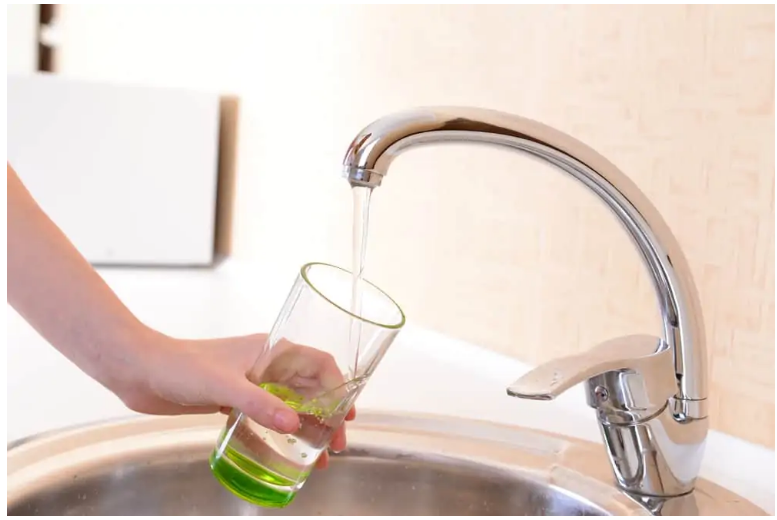On this page in the next paragraphs you can get a bunch of superb news in regards to 9 Reasons for Low Water Pressure in Your House.

Low water pressure in your house can be a frustrating problem, impacting every little thing from showering to washing dishes. If you're experiencing weak water flow, there are several feasible reasons and options to discover. In this guide, we'll go over common factors for low tide stress and functional steps to attend to the issue efficiently.
Introduction to Low Tide Pressure
Low tide stress happens when the flow of water from your faucets, showers, and various other components is weak than normal. This can make daily jobs a lot more tough and much less reliable. Understanding the reasons for low water pressure is critical to finding the appropriate service.
Common Reasons For Low Water Stress
Pipe Obstructions
With time, pipes can end up being blocked with mineral deposits, sediment, or debris, limiting the flow of water. This is a typical issue in older homes with galvanized steel pipelines.
Rust
Rust within pipelines can bring about leaks and reduced water stress. Corrosion build-up can constrict water flow, especially in aging plumbing systems.
Faulty Pressure Regulatory Authorities
Pressure regulators are accountable for keeping regular water pressure in your home. If they malfunction, it can lead to low tide pressure or irregular circulation throughout your house.
Municipal Water System Issues
Sometimes, the issue exists outside your home. Community water system concerns, such as main line leakages or upkeep work, can briefly lower water pressure in your location.
How to Detect Low Water Stress
Checking Faucets and Fixtures
Start by testing the water pressure at various taps and components throughout your home. If the problem is separated to certain locations, it might suggest localized issues.
Evaluating Pipelines
Examine noticeable pipelines for indications of leakages, deterioration, or blockages. Take note of any type of uncommon audios, such as knocking or rattling pipelines, which can show issues within the plumbing system.
Consulting with a Plumber
If you're unable to pinpoint the root cause of low tide pressure, think about hiring a professional plumber to carry out a thorough assessment. They can identify underlying concerns and advise proper services.
DIY Solutions to Fix Low Water Stress
Cleaning Up Aerators and Showerheads
Natural resources can collect in aerators and showerheads, minimizing water flow. Remove and clean these parts consistently to boost water stress.
Flushing Water Heater
Sediment build-up in the hot water heater can restrict circulation and reduce effectiveness. Flushing the container occasionally aids remove debris and keep optimum efficiency.
Inspecting Pressure Regulator
Ensure that the stress regulatory authority is working properly. Adjusting or changing the regulator can aid recover appropriate water pressure throughout your home.
Clearing Up Clogs in Water Lines
For small blockages, attempt utilizing a plumbing serpent or chemical drainpipe cleaner to clear blockages in pipelines. Beware when utilizing chemicals and adhere to safety standards.
When to Call a Professional Plumber
If DIY efforts fall short to settle the issue or if you presume substantial plumbing problems, it's best to seek support from a qualified plumber. They have the knowledge and tools to address complicated issues securely and efficiently.
Preventive Measures to Keep Water Stress
Regular Upkeep
Set up routine upkeep for your plumbing system to stop concerns such as rust, leakages, and clogs. Dealing with minor troubles early can assist avoid even more substantial repairs later on.
Mounting a Pressure Booster
Consider mounting a stress booster pump to improve water stress in locations with consistently low flow. This can be particularly helpful for multi-story homes or residential or commercial properties with high-demand fixtures.
Tracking Water Usage
Bear in mind water use routines and stay clear of ill-using the plumbing system. Basic adjustments, such as astonishing showers and laundry lots, can assist keep appropriate water stress.
Conclusion
Taking care of low tide stress can be discouraging, but recognizing the underlying reasons and applying ideal solutions can recover ideal flow throughout your home. Whether it's cleansing aerators, examining pipelines, or consulting with a plumber, taking positive actions can make sure a steady supply of water for your everyday demands.
FOUR WAYS TO FIX LOW WATER PRESSURE NOW
Turning on a shower or faucet only to find the water comes out in a sad, slow drizzle is never a good feeling. How exactly are you supposed to wash a pan or take a quick shower when it takes 10 minutes just to rinse off a little soap? The good news is that when your water pressure is bad, there's always a cause: typically one that can be easily fixed. Here are some of the most common causes of low pressure and what you can do to fix the issue:
DEBRIS AND MINERAL DEPOSIT BUILDUPS
If you notice low water pressure from just one or two of the fixtures in your house, the problem likely has to do with debris buildup. Water is full of minerals and other debris, all of which can accumulate in your pipes and on your fixtures. This can cause a blockage that affects how much water flows through. To fix this, try filling a small plastic bag with white vinegar, and use a rubber band to hang it around your showerhead or faucet. Let the head of the fixture soak for a few hours, and the vinegar should loosen the deposits.
WATER LEAKS
Leaks are another common cause of low water pressure. If water is flowing out of your plumbing through a hole or crack before it can reach your fixture, the pressure coming out of the faucet or showerhead will be lower. A plumbing professional is your best bet for finding and repairing a leak in your water supply pipes.
Leaks are another common cause of low water pressure. If water is flowing out of your plumbing through a hole or crack before it can reach your fixture, the pressure coming out of the faucet or showerhead will be lower. A plumbing professional is your best bet for finding and repairing a leak in your water supply pipes.
FOUR WAYS TO FIX LOW WATER PRESSURE NOW
Turning on a shower or faucet only to find the water comes out in a sad, slow drizzle is never a good feeling. How exactly are you supposed to wash a pan or take a quick shower when it takes 10 minutes just to rinse off a little soap? The good news is that when your water pressure is bad, there's always a cause: typically one that can be easily fixed. Here are some of the most common causes of low pressure and what you can do to fix the issue:
DEBRIS AND MINERAL DEPOSIT BUILDUPS
If you notice low water pressure from just one or two of the fixtures in your house, the problem likely has to do with debris buildup. Water is full of minerals and other debris, all of which can accumulate in your pipes and on your fixtures. This can cause a blockage that affects how much water flows through. To fix this, try filling a small plastic bag with white vinegar, and use a rubber band to hang it around your showerhead or faucet. Let the head of the fixture soak for a few hours, and the vinegar should loosen the deposits.
WATER LEAKS
Leaks are another common cause of low water pressure. If water is flowing out of your plumbing through a hole or crack before it can reach your fixture, the pressure coming out of the faucet or showerhead will be lower. A plumbing professional is your best bet for finding and repairing a leak in your water supply pipes.
Leaks are another common cause of low water pressure. If water is flowing out of your plumbing through a hole or crack before it can reach your fixture, the pressure coming out of the faucet or showerhead will be lower. A plumbing professional is your best bet for finding and repairing a leak in your water supply pipes.
A VALVE ISSUE
If you have low water pressure throughout your home, check your main shut-off valve to make sure it's completely open. You may also want to see if there's a pressure-reducing valve installed. If there is, have a plumber help you adjust the settings to get the pressure you're looking for.
OTHERS USING WATER
Believe it or not, your low water pressure could be caused by your neighbors. If you notice low pressure at certain times of day, it may be because you and the people living next to you have similar schedules - when everyone is showering at the same time, the pressure will be lower in every home. Low pressure throughout the neighborhood may also be caused by an issue with your municipal water supply. If that's the case, call the supplier to see if they're working on the issue.
https://www.rotorooter.com/blog/water-leaking/low-water-pressure-fixes/

I recently found that post on Low Water Pressure in the House? while perusing the search engines. Those who appreciated our post please be sure to share it. Thanks a lot for your time. Come back soon.
Click Here